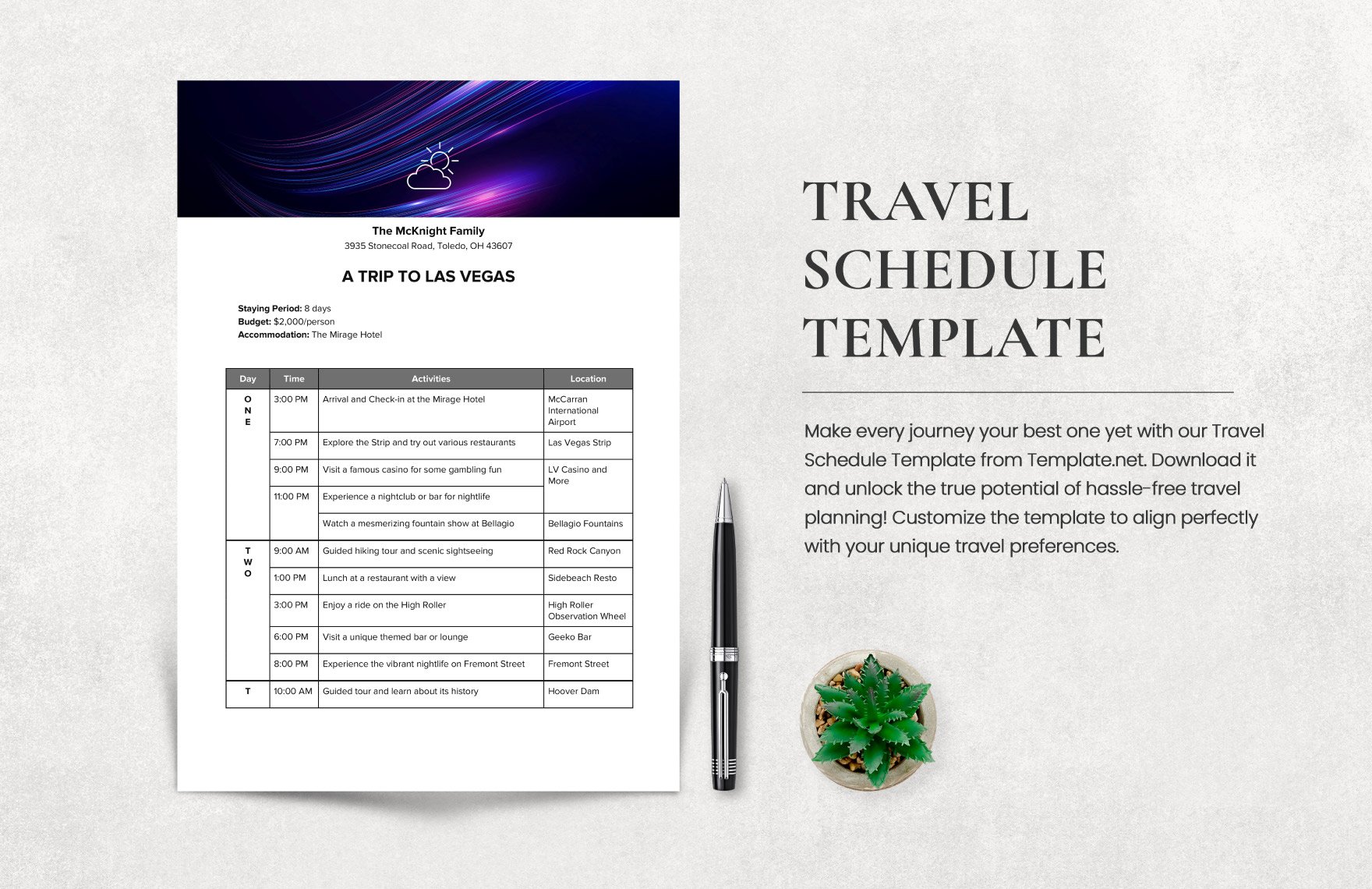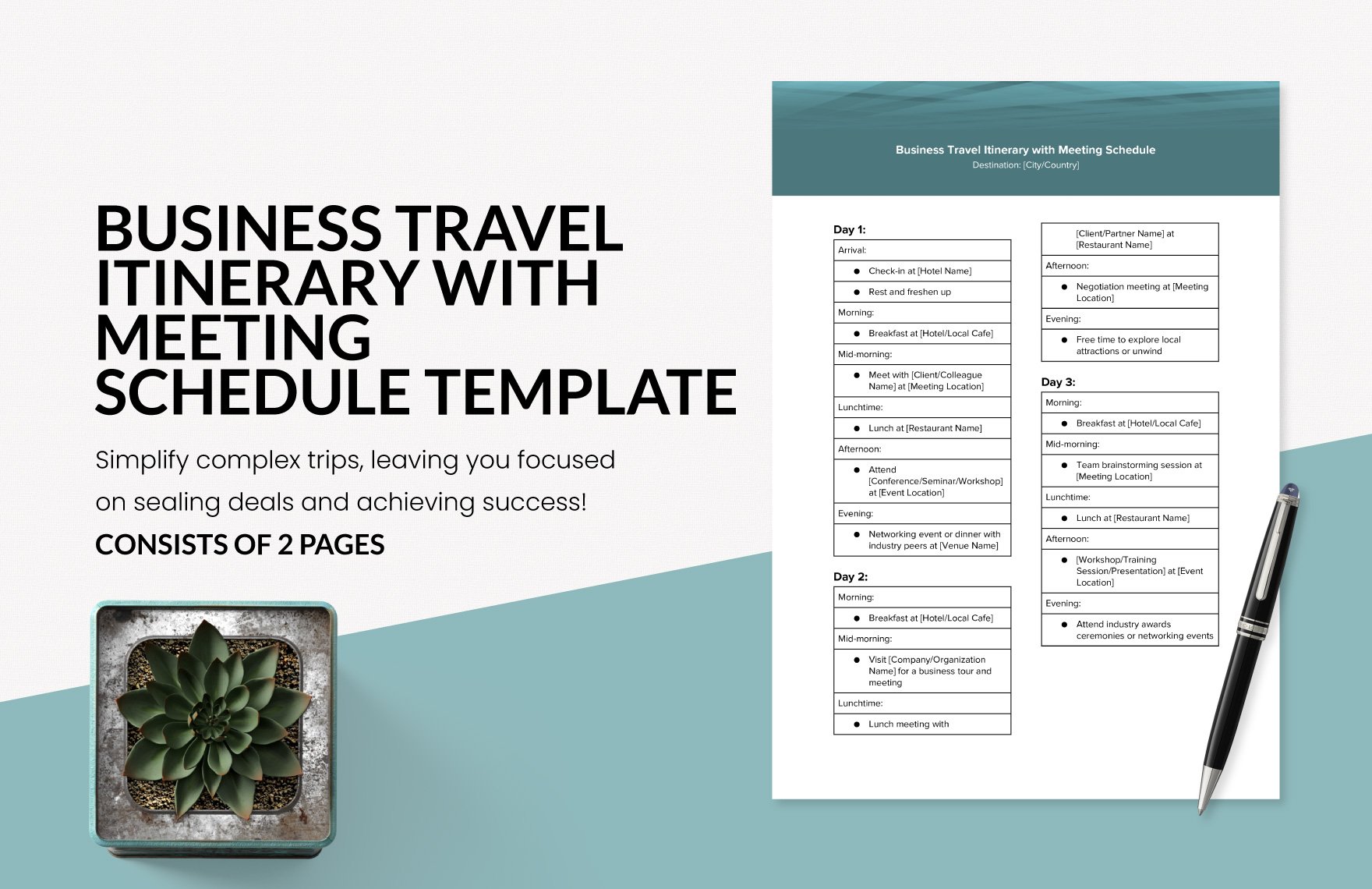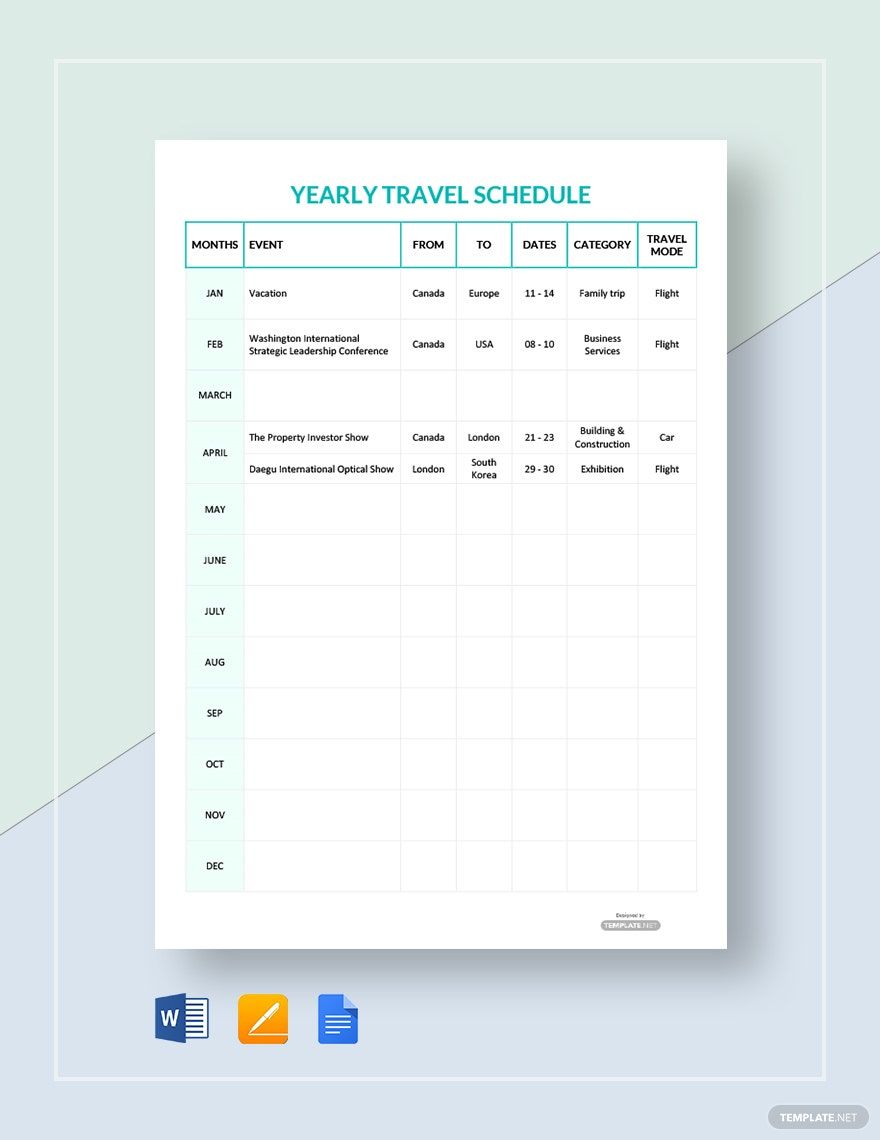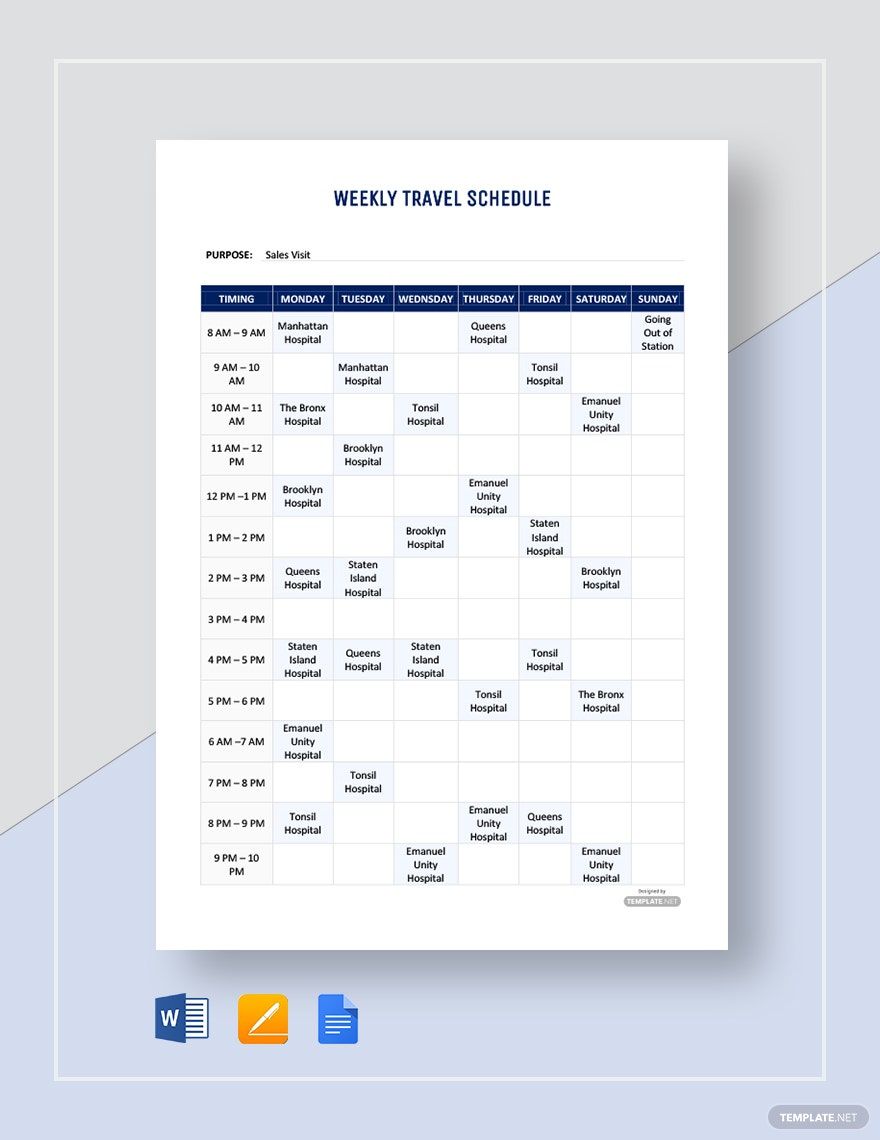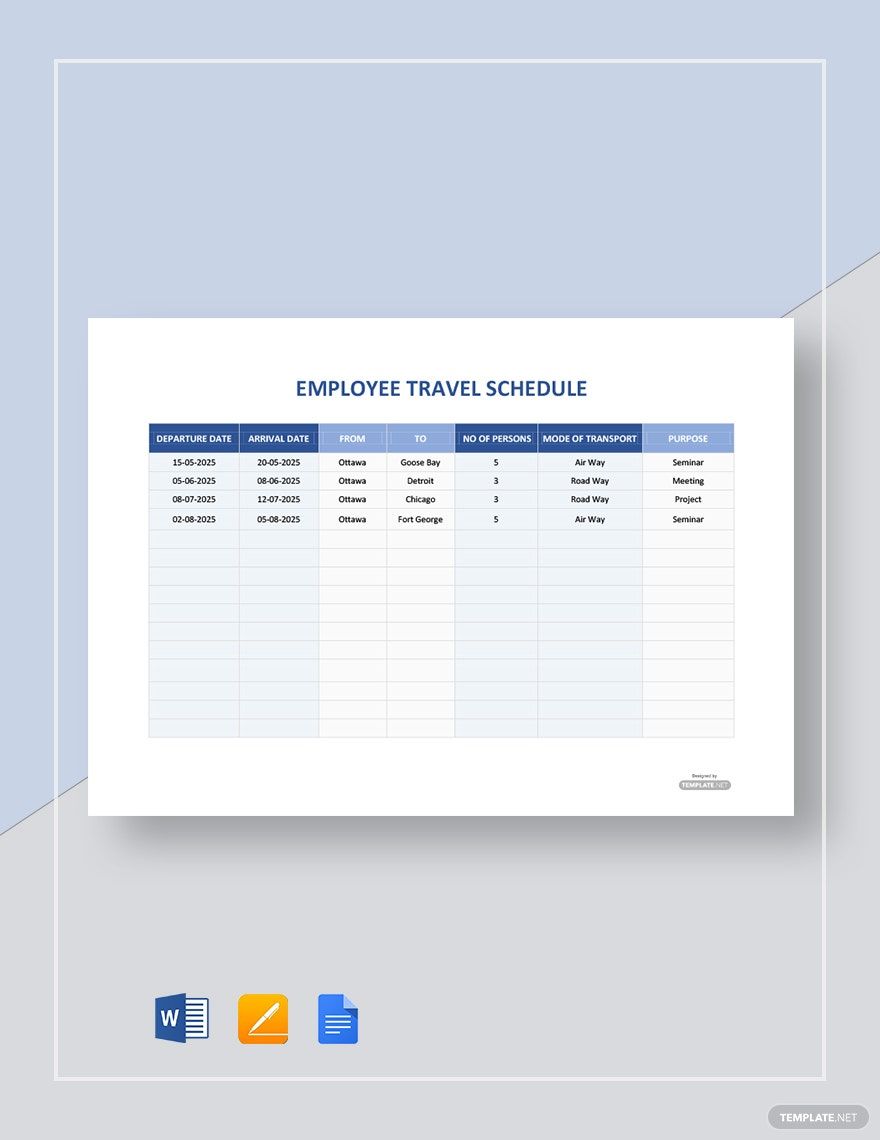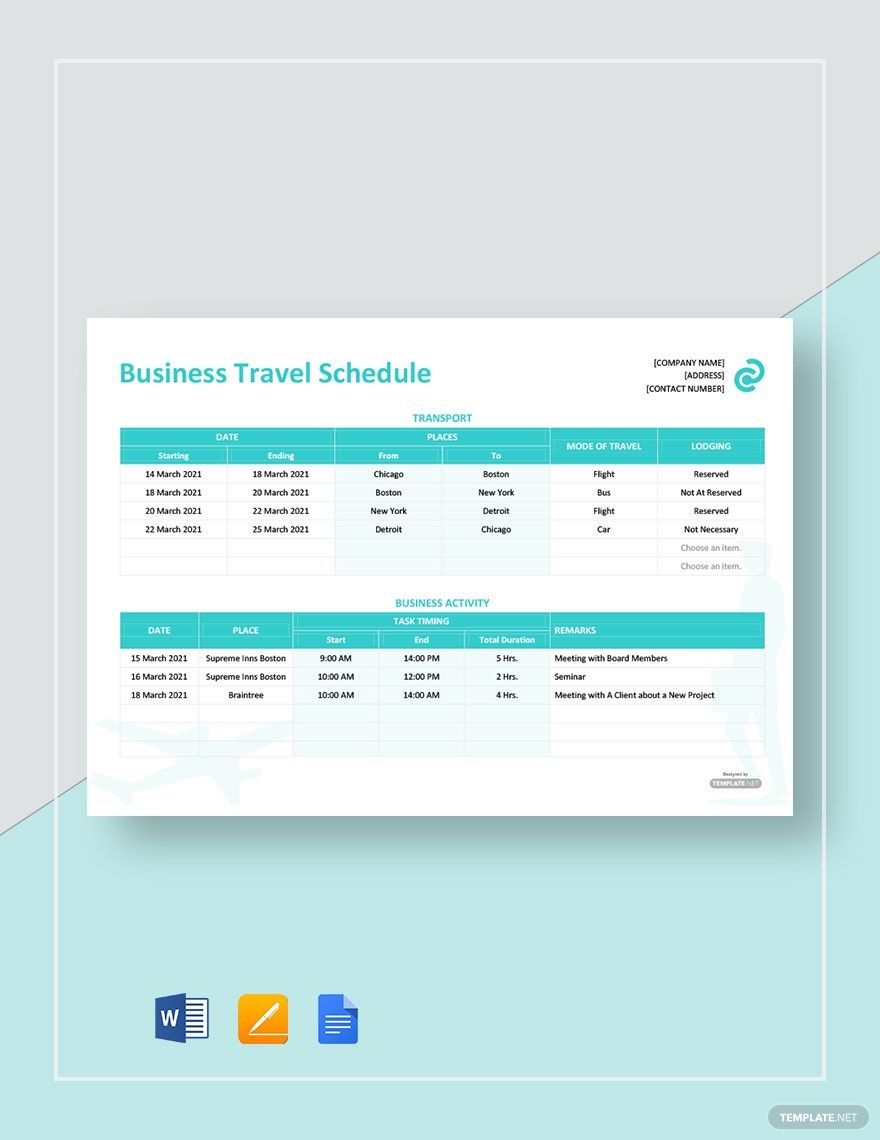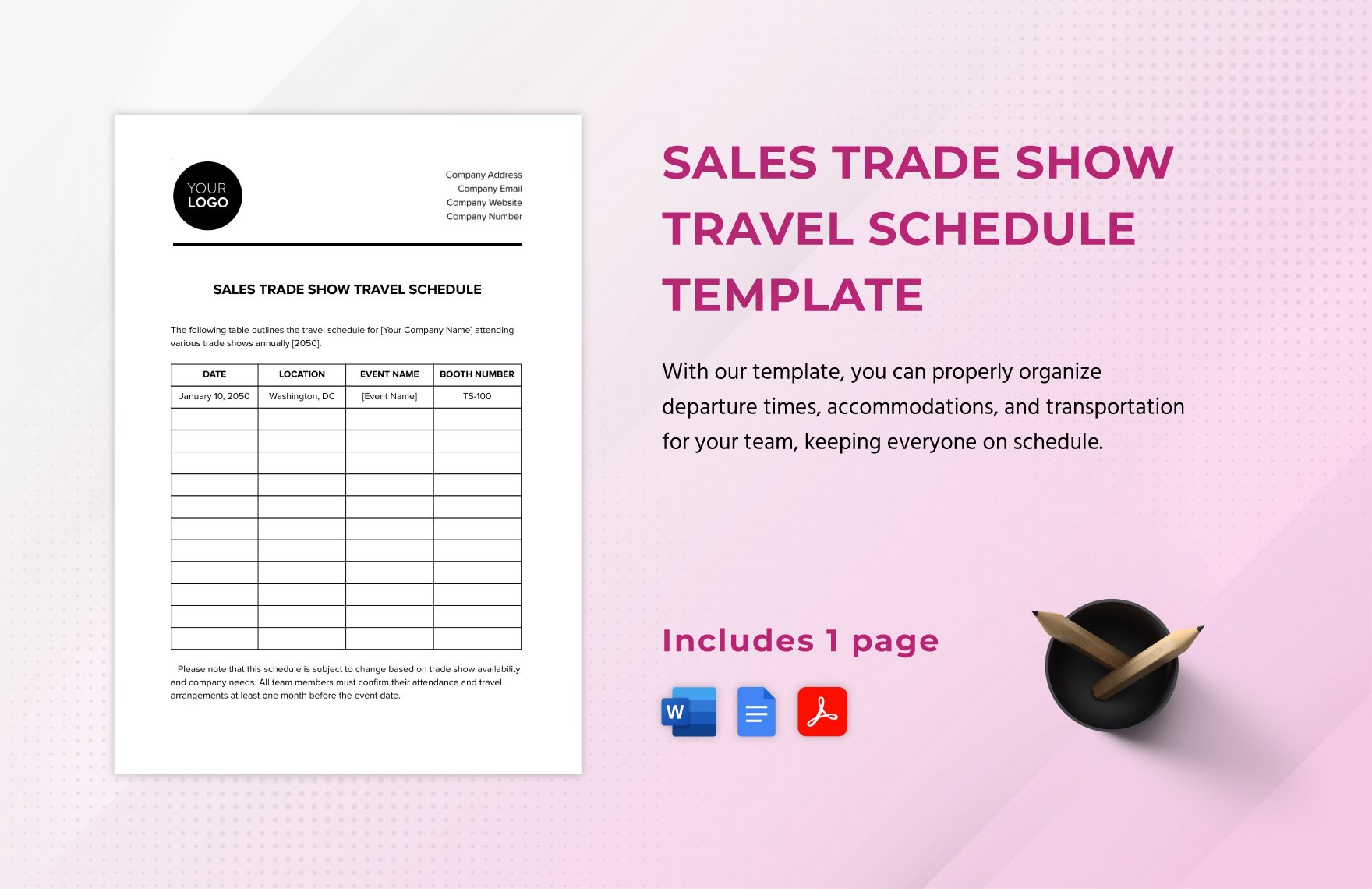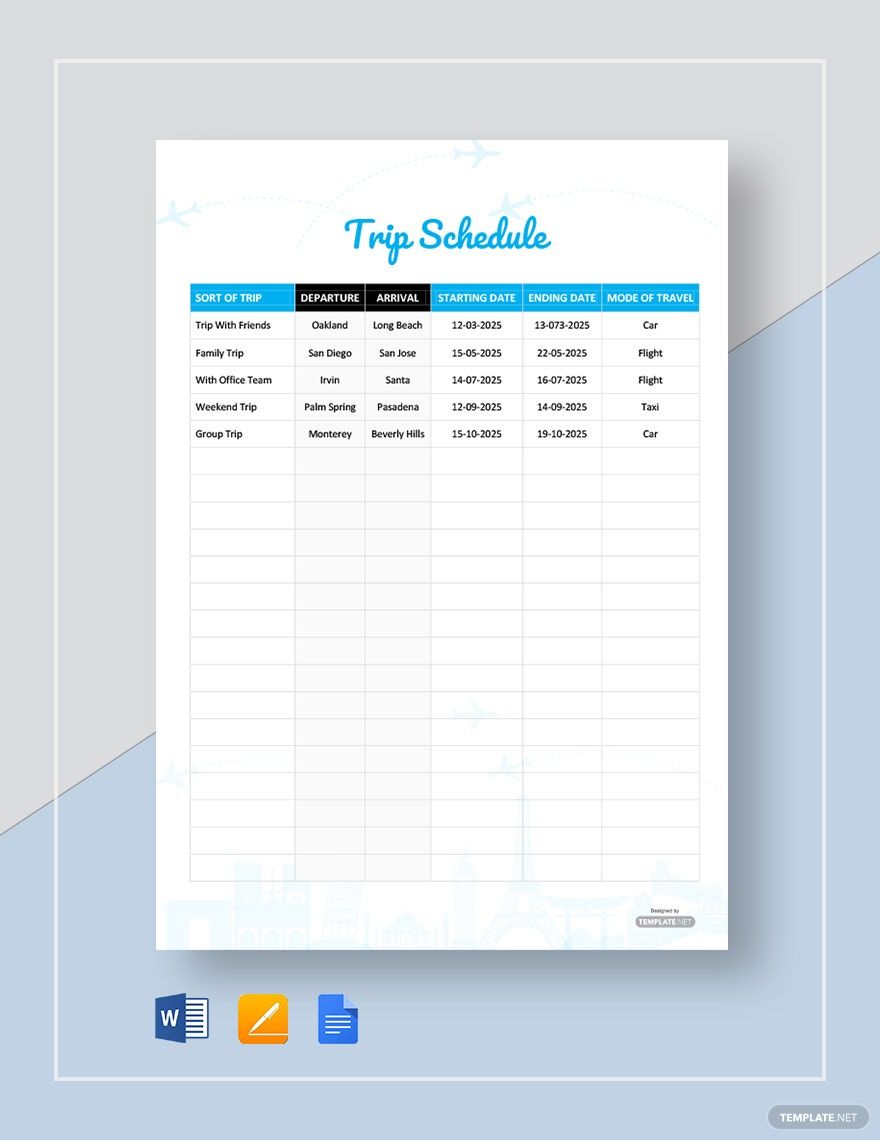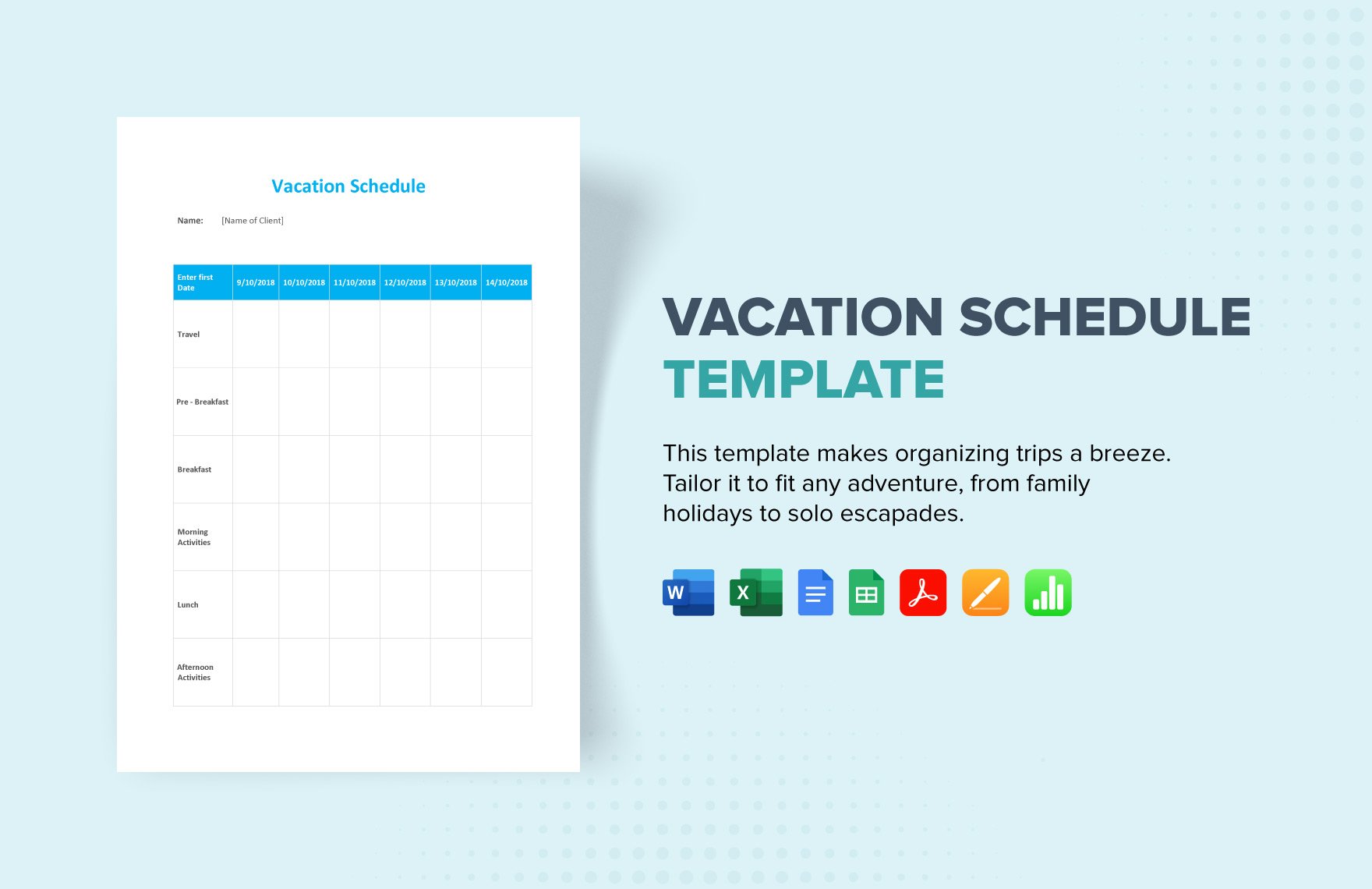Supposed it is fast and easy to travel today. You need your passport and plane ticket prepared, and you are off to go. It’s an exciting journey. But it is a different story when you do not have a travel itinerary. You will have days jampacked with activities. And days with no plans at all. This is where stress lingers. To avoid this traumatic case of traveling, get handy by browsing through our Ready-Made Travel Schedule Templates in Microsoft Word. Print your copy in A4 or US Letter sizes. Now, maximizing your time is hassle-free. By looking at your copy, you can distinguish what your priority is. So, don't wait any further. Download a template today!
Travel Schedule Templates in Word
Get creative with customized travel schedule templates in Word. Free and professionally designed for printable or downloadable use. Start now!
- Ticket
- Quotation
- Receipt
- Recipe Card
- Proposal
- Contract
- Statement
- Newsletter
- Coupon
- Bill of Sale
- Agreement
- Affidavit
- Memo
- White Paper
- Itinerary
- Email Signature
- Postcard
- Plan
- Planner
- Program
- Note
- Cover Page
- ID Card
- Banner
- Form
- Envelope
- CV
- Ebook
- Manual
- Notice
- Magazine
- Thesis
- Bookmark
- Lesson Plan
- APA
- Job Description
- Cover Letter
- Sign In Sign Out
- Poster
- Chart
- List
- Time Sheet
- To-Do List
- Log
- Assessment
- Teacher
- Business
- HR
- Marketing
- Sale
- Advertising
- Finance
- Accounting
- Legal
- Administration
- Operations
- Health Safety
- Bookkeeping
Bring your travel plans to life with pre-designed Travel Schedule Templates in Microsoft Word by Template.net
Unlock the convenience of organizing your journeys with pre-designed Travel Schedule Templates exclusively available in Microsoft Word by Template.net. Designed for travelers, tour coordinators, and everyone in between, this tool allows you to create organized travel itineraries efficiently without the need for design expertise. Whether you're planning a personal trip or coordinating a group tour, our templates can help you meticulously outline every detail. With free templates available for download and easy customization, you can prepare print-ready schedules or digitally share them with fellow travelers. Enjoy the flexibility of beautiful pre-designed layouts that you can tailor to fit your travel needs, ensuring a perfectly coordinated experience both on paper and in digital formats.
Explore the versatility and creativity embodied in these Travel Schedule Templates, where each design is crafted to simplify your itinerary planning process. At Template.net, we continually update our library with new and innovative designs to keep your schedules fresh and relevant. Seamlessly download or share these pre-designed templates via link, print, email, or export to expand your communication reach. Maximize your itinerary management by combining free and premium template options for ultimate flexibility and appeal. Dive into the myriad possibilities with our tools and ensure your travel plans are as organized and effective as possible.
